Jason went to Korea and got really mad that even though they have density, sidewalks, transit, and bike lanes, they also have roads and cars:
YouTube (PreserveTube)
There's a nice park in the first city he went to (Songdo), but because there's a road on the border, it was unacceptable:
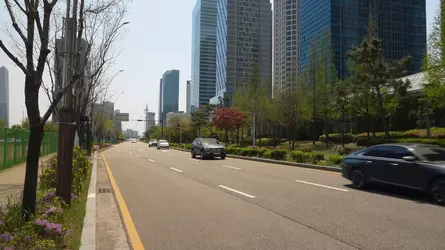
Most people told me to get out at Central Park station, which I was told was the nicest part of Songdo, but I wanted to check out the International Business District first, and then walk back towards the park. And that turned out to be a pretty bad idea, because I got out of the metro station on a narrow sidewalk next to this wide road. This was unpleasant, and not a great start to my visit here.
A car drove past him at around 20 mph:
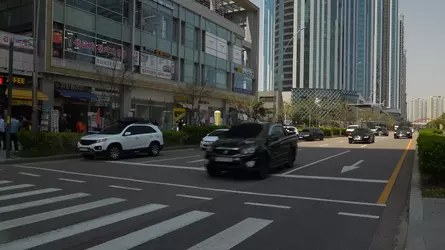
As I waited to cross the road, cars were driving really fast here, and it was not comfortable at all.
Despite the city having fully separated bike lanes, he still manages to complain:

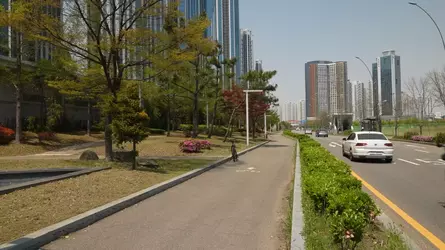
And there were bike lanes on almost every street. Even next to that wide road near the metro station. Though there was junk lying in several of them.
He complains about bollards restricting car access to bike lanes:
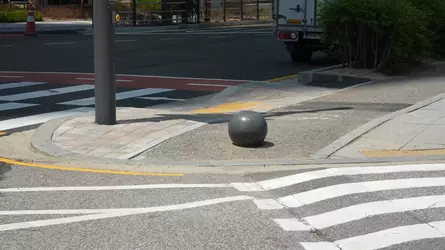
And I have no idea why they installed a giant ball in the middle of this bike lane. I guess it's to keep cars from driving in it? But it seemed like a crash hazard for anybody cycling.
He then went to the park and took the least photogenic photo possible:
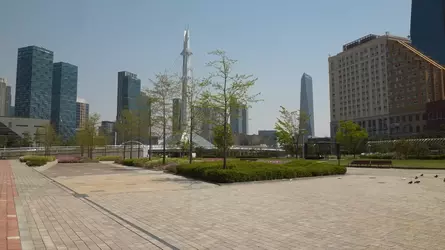
For context, this is the park:
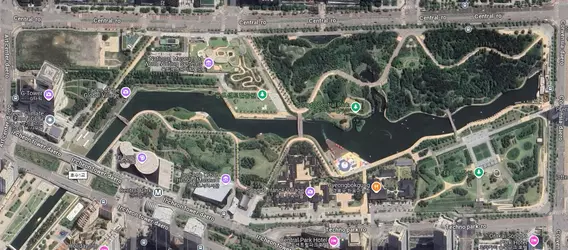
This is Central Park, and the idea was modelled after Central Park in New York. One giant park that cuts through the whole city.
Guess what NYC's Central Park is bordered by? Wide roads:
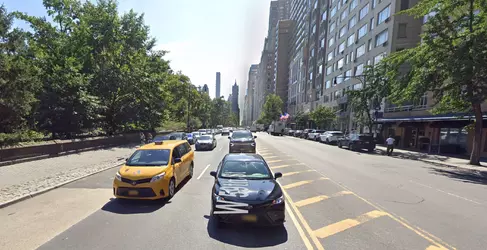
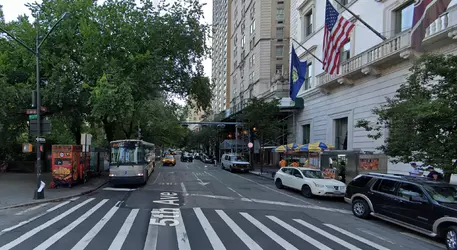
He then goes to a European-style shopping street, but still finds a way to hate on it:
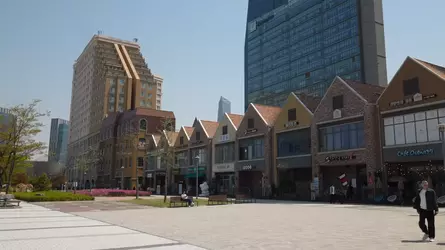
After a short walk through the park I got to this little place with shops that was clearly designed to look like a Northern European city. I’m assuming Denmark was their model, based on the Danish names. This place was pretty kitschy, but lots of cities do this kind of thing. It was still way better than, say, Manchester Square in Edmonton, Canada, with shops designed to look like beautiful Dutch canal houses … which surround a giant parking lot at the side of a busy stroad. Some day I’m going to have to make a video about cargo cult urbanism.
He then goes to an apartment building's garage and complains that it has a gate:
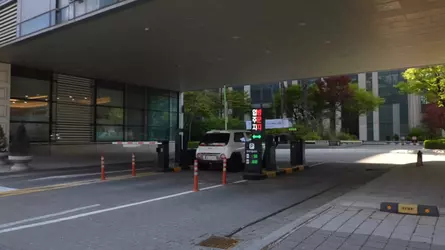
Everything else I saw in Songdo was pretty terrible. The residential buildings felt like gated communities that were meant to be driven into.
He also complains about a children's playground being near a road:
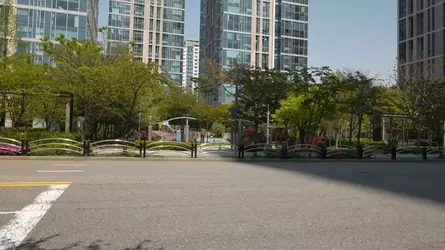
I saw a few open areas with public art. And these buildings at least had a playground next to them. But it was right next to this wide road.
Horrifyingly, there are TRAFFIC LIGHTS:
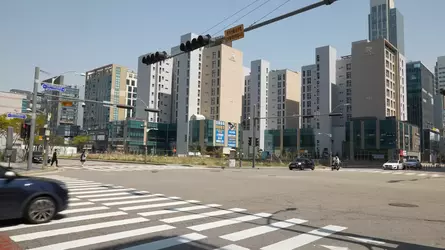
But then, everywhere I went in Songdo I saw extremely wide roads. And there were a lot of traffic lights to wait at.
Oh no, no one is cycling IN THE MIDDLE OF THE WORK DAY:
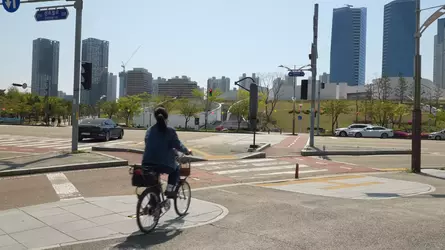
I saw several roads with bicycle paths, but not a lot of people cycling. There were a lot of bicycles parked at the metro station though, so it’s possible that these are more often used during rush hour.
Also Korea is much warmer than the Netherlands:
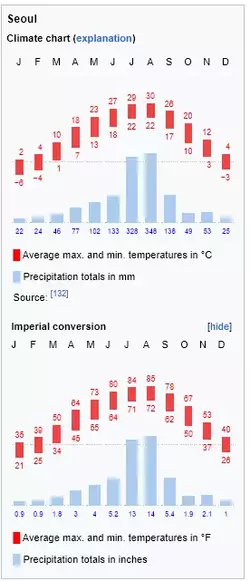
He accidentally says the quiet part outloud:
But everything about this city makes it clear that it was designed for drivers, and everybody else comes a very very very distant second. So I don’t blame people for not wanting to cycle here. Why would you bother when it will always be faster to drive?
He gets triggered by a car dealership:
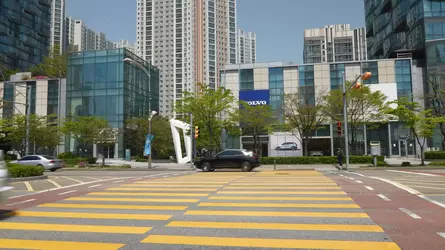
And what’s the point in having an ultra-modern green smart eco-city if every time you walk somewhere you have to spend several minutes waiting to cross a six-lane road while staring at a Volvo dealership?
Also mad that a hotel is next to a road:
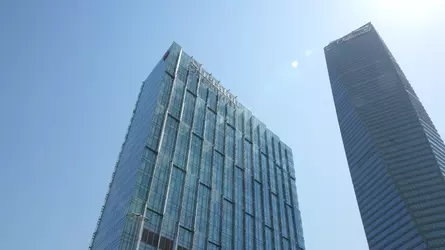
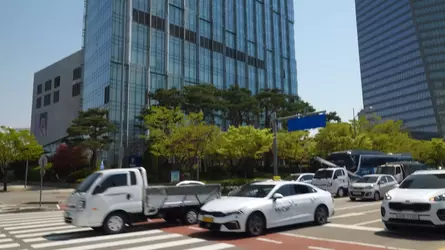
This hotel was the first LEED-certified hotel in all of South Korea. Congratulations Sheraton! Your eco-friendly certified building is right on the side of this awful 8 lane arterial road full of cars.
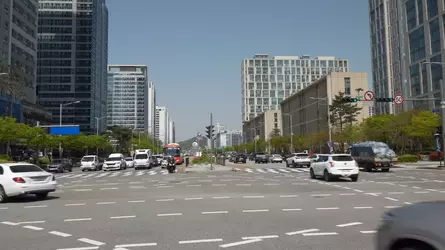
Seriously, look at how horrible this place is. In this eco-friendly green smart city. What a [honk]ing joke.
If you can't put parks, playgrounds, apartment buildings, or hotels next to roads, what can you put near them?
He then goes on a rant about how private developers, unlike governments, have to build things that people want:
One of the fundamental problems with creating a new city from scratch is how to finance its construction. Previous “New Towns” in Korea were planned and financed directly by the government, but these days, the favoured method of financing almost every large infrastructure project anywhere, is Public-Private Partnerships, where governments give up control and profits to private corporations, but in return, they get private financing that doesn’t need to come out of taxes. This may seem great in principle, but while the eco-friendly smart city may be a great marketing pitch, the ultimate goal is to make a profit. So these private companies are generally not willing to take on the risk of building something totally new. Which usually means sticking to the car-centric status quo.
How dare Korean rich people want to let everyone be able to drive! They should be like New Yorkers and Londoners and reserve the roads for the rich
like Jason!

Especially when the largest private company involved in the project is an American developer. And the executives at those corporations who sign-off on the financing and the project plans themselves are extremely wealthy, and they’re the type of people who drive everywhere. In short, they’re unlikely to greenlight any project that isn't accessible by Lamborghini.
So while Songdo isn’t exactly a walkable eco-friendly utopia. It is a great place to watch supercars line up at the gas station.
He then complains that the city looks TOO GOOD from the air:
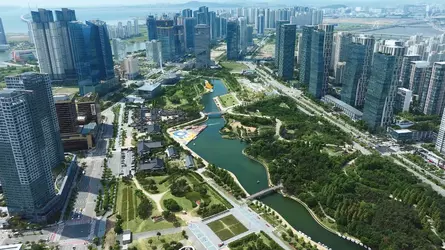
they just needed a city that looked great in renders and drone flyovers. Which is why the farther up you are, the nicer this city looks.
He decides to walk down a side street, but is shocked to see PARKED CARS:
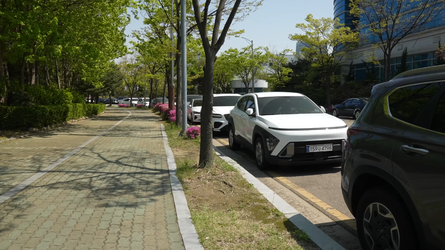
I walked along this pedestrian path that brought me into an office park. And there were parked cars everywhere. Seriously, there were cars in every direction as far as I could see. There were parking lots full of cars. Cars on the street. Cars on the sidewalk. If there was a space for a car, there was one parked there.
He went to the subway, but unfortunately, it was next to a ROAD:
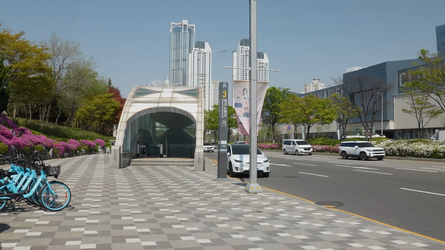
It is so gross that Songdo was pitched as a futuristic green LEED-certified smart city, and yet they built it to be so car-friendly that everybody drives everywhere. And when I finally got to the metro station, It was at the side of a massive eight-lane road. Because of course it was.
He then went to another city (Sanbon), which is better because he found a road without traffic lights:
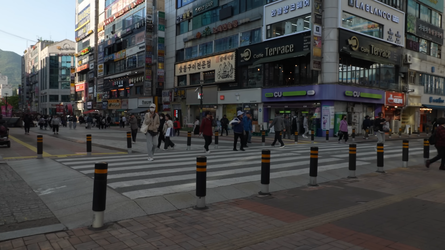
Notice that they don’t need any traffic lights here. The street is narrow and low-speed, so people can just cross at the zebra crossing. And it’s the drivers that have to wait for the people walking, and not the other way around.
He also likes that there's more people around, but it's later in the day, presumably after work hours:
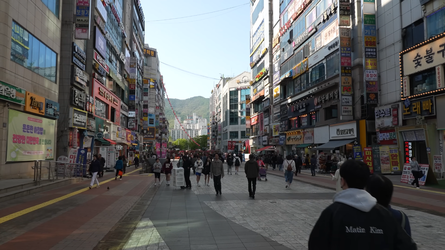
But after crossing that one tiny street, I was in this pedestrian area, with dozens of interesting shops and restaurants. This place immediately felt so much more “alive” than anywhere I went in Songdo.
Unfortunately, this city also has ROADS and PARKING LOTS:
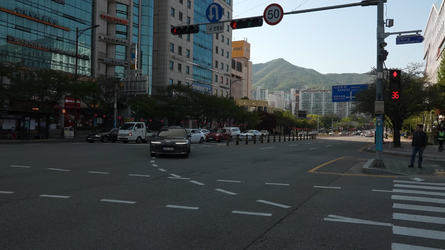
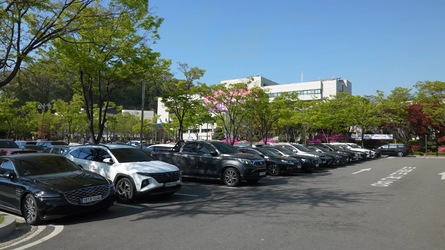
Unfortunately, apart from the side facing the train station, this low-car shopping area was surrounded by some pretty wide roads on every side. And the nearby city hall, Had this huge surface parking lot out front.
After Sanbon, he then travels to Pangyo.
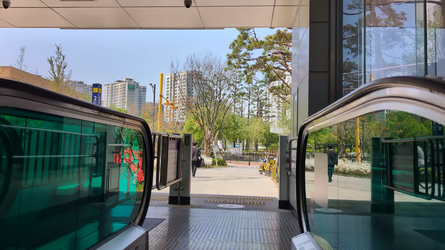
Unfortunately, Pangyo has pedestrian bridges:
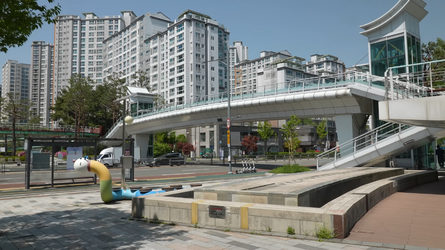
At this point the park crosses a much busier road, and there was this pedestrian bridge to cross it. Now, I really don’t like pedestrian bridges, and I’ve talked about that before in previous videos. I believe that the people walking should stay on the ground, and it’s the cars that should go up or down.
and its people are Christian:
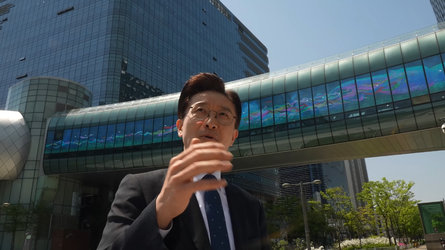
There were also a ridiculous number of street preachers from the World Mission Society Church of God, and I’m sorry to say, you’re not getting out of this plaza without talking to at least one of them.
It also has wide roads:
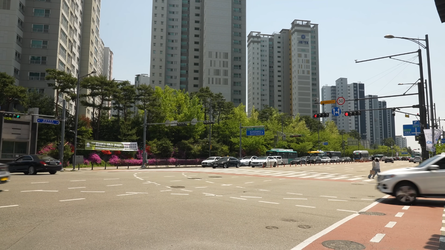
Unfortunately this car-free plaza, while pleasant, is surrounded on every side by wide roads.
and "bad" bike infrastructure:
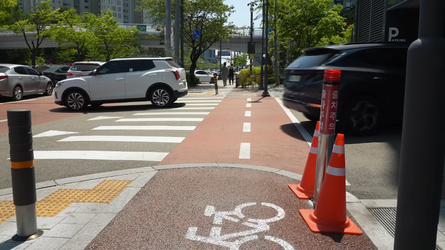
The bicycle infrastructure was laughable though. There were a handful of bicycle lanes like this one along the sidewalk, which looks pretty good. Until you notice that it just ends at the entrance to a parking garage.
He also complains about people using a bus lane as a right turn lane:
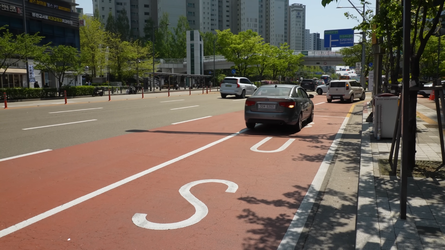
this bus lane has become the de facto entrance to that parking garage. Seriously. These drivers have already been given three lanes per direction and they still block the damned bus lane. It really doesn't matter how much space you devote to cars, they will always take more.
He then goes to Bundang, yet another city. There, he finds a tree-lined cafe street, but because there are cars, he is unhappy:
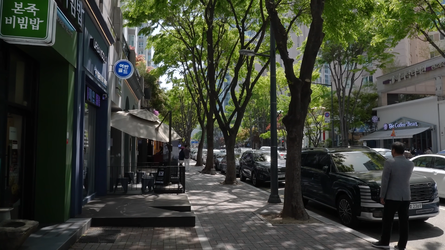
I came to this area first because I heard there was this nice tree-lined street full of cafés. And it was lovely. But it was also totally choc full of cars. It was wild. This is a textbook example of how cars ruin great urban places. This street is lovely with trees that provide shade, and lots of cool cafés. But that is soured by the constant sound of engines and the stink of idling cars. I did not like this street at all
He then goes to a park, but bitches about having to wait to cross the street:
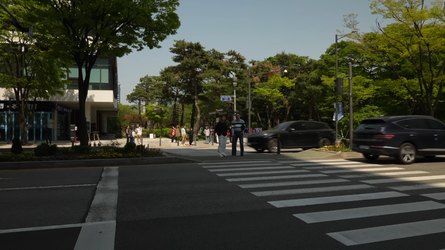
But unfortunately in order to get to the park itself, I had to wait a surprisingly long time to cross this wide arterial road. I waited at least six minutes, and the light was already red when I got there. So I have no idea how long this light is, but I can tell you it is way too long.
It seems like such a waste that all of these apartment buildings were built around this beautiful central park. But then all the residents need to cross eight lanes of car traffic to get to it. Though if you look carefully in the distance you can see one pedestrian bridge, so that's something, I guess.
Pangyo and Dongtan have a brand new high-speed commuter rail line, but Jason still finds something to bitch about:
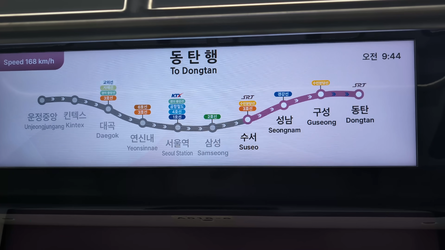
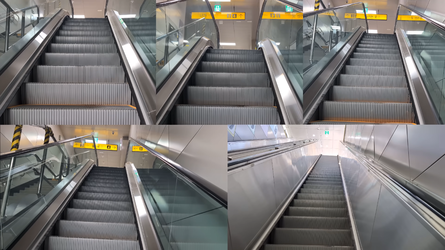
The GTX trains are really fast, but that comes at a cost of the stations being very very far underground. At Dongtan I needed to take five escalators to get to the surface. And when I got out it was this. Pretty desolate.
The station is connected to a mall, but because it's indoors, it's unacceptable:
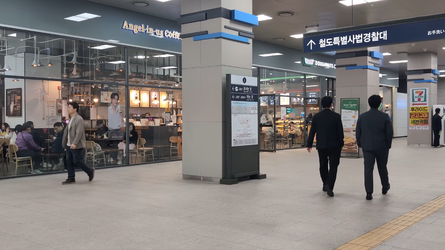
This exit was connected by escalator to a shopping mall, and while not exactly as cool as a pedestrianised square, it's still better than being dumped out of the side of an arterial road.
He then crosses the street, with more bitching:

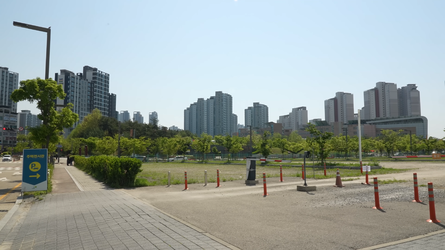
I wanted to get to this park right near the shopping mall, but there's no way to cross the street here because there's a fence. So I went to the nearest crossing, waited to cross, and walked to the park. Which turned out to be not a park but a parking lot. Sometimes these scripts just write themselves. But I did eventually get to the park, and it was very nice.
Even more whining about crosswalks:
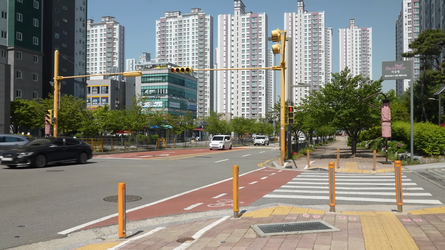
Anytime I wanted to walk somewhere I had to wait to cross several roads. And in some cases there wasn’t even any traffic, which just meant I had to wait at red lights while absolutely no cars were going through.
Complaining about a road with a fence to stop young children from jaywalking:
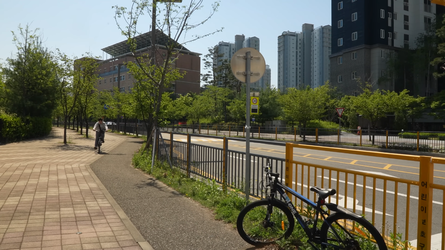
This residential street has a 30 kilometer per hour speed limit, but it’s still extremely wide and straight. And the sidewalk has been fenced off with signs that say “Child Protection Zone.” I guess they’ve accepted that cars kill kids, but since they won’t restrict the cars, they have to fence off the kids. Which is kinda depressing.
Despite there being fully separated bike lanes and extremely wide sidewalks, Jason still says that this city is designed for cars:
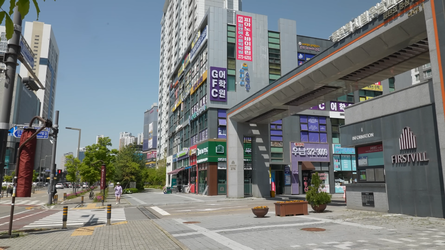
The sidewalks were fairly large though and I saw a few roads with protected bicycle lanes, But again it’s very clear that this place was designed for drivers, with a few elements here and there to placate everyone else.
He then says that the Netherlands has better suburbs (from his
YouTube Live channel, he's referring to Houten):
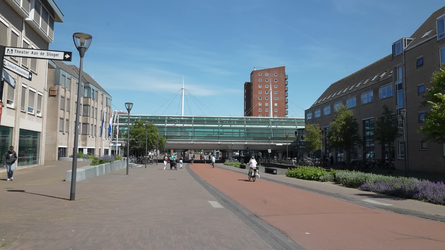
After returning from my trip to South Korea, I visited a “New Town” in the Netherlands that was built in the 1980s. This town was designed to put walking and cycling first, instead of cars, and it couldn’t be more different. Especially the ability for children to travel independently. But that’s a topic for a future video.
He also made a video about Samsung's campus, but since Samsung wouldn't let him film, he used stolen video clips to make it which resulted in YouTube automatically copyright-striking it, so it's only on
Nebula:
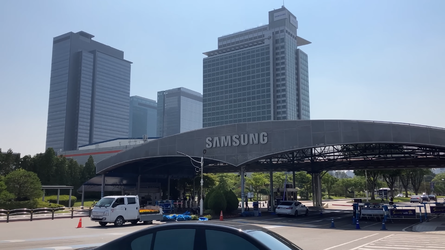
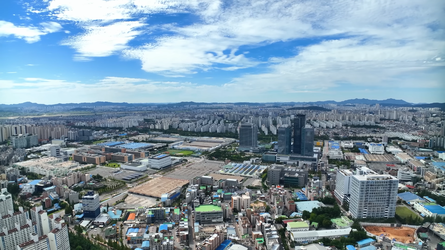
Speaking of Samsung, their main campus is called Samsung Digital City, and it’s like a “New Town”, dedicated only to Samsung. I’ve been there many times, but security is very strict. I made a video about Samsung Digital City, but since I wasn’t allowed to film inside, I had to use whatever clips I could find. And while I believe this constitutes fair use, the automated YouTube copyright-detection bot disagrees, so that video will only be available on Nebula.





















































































